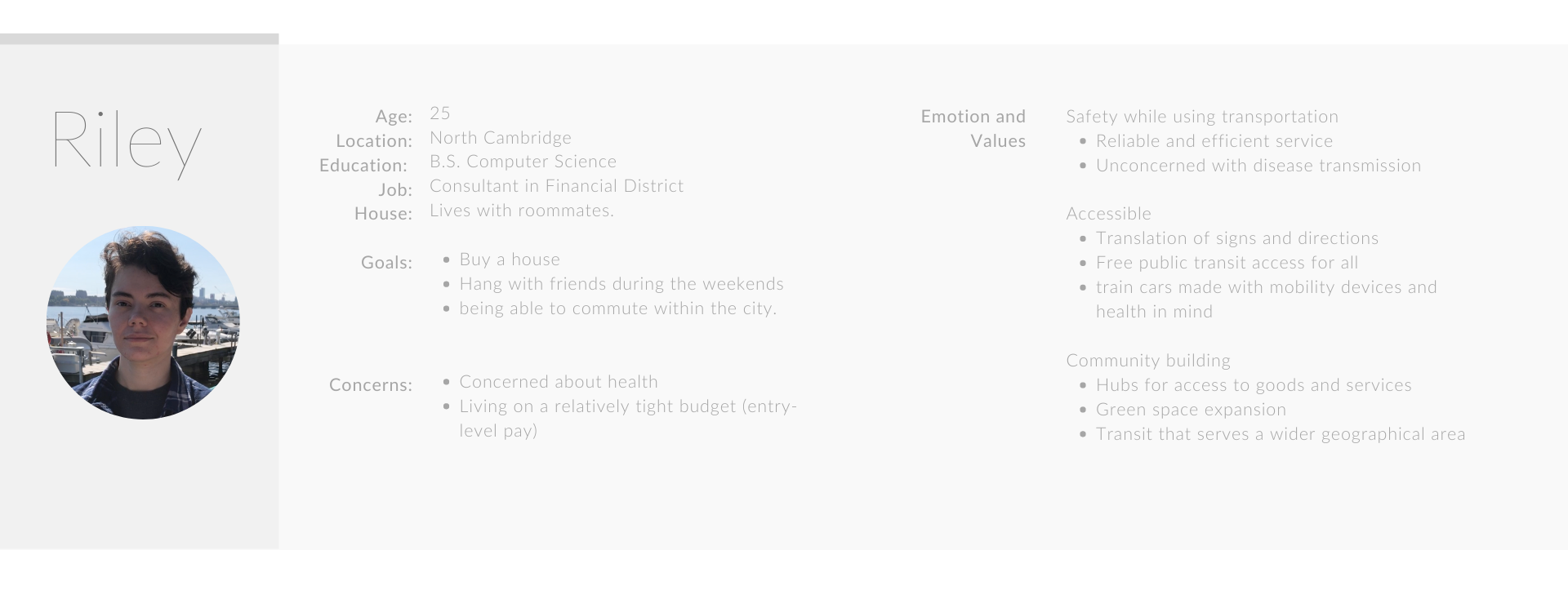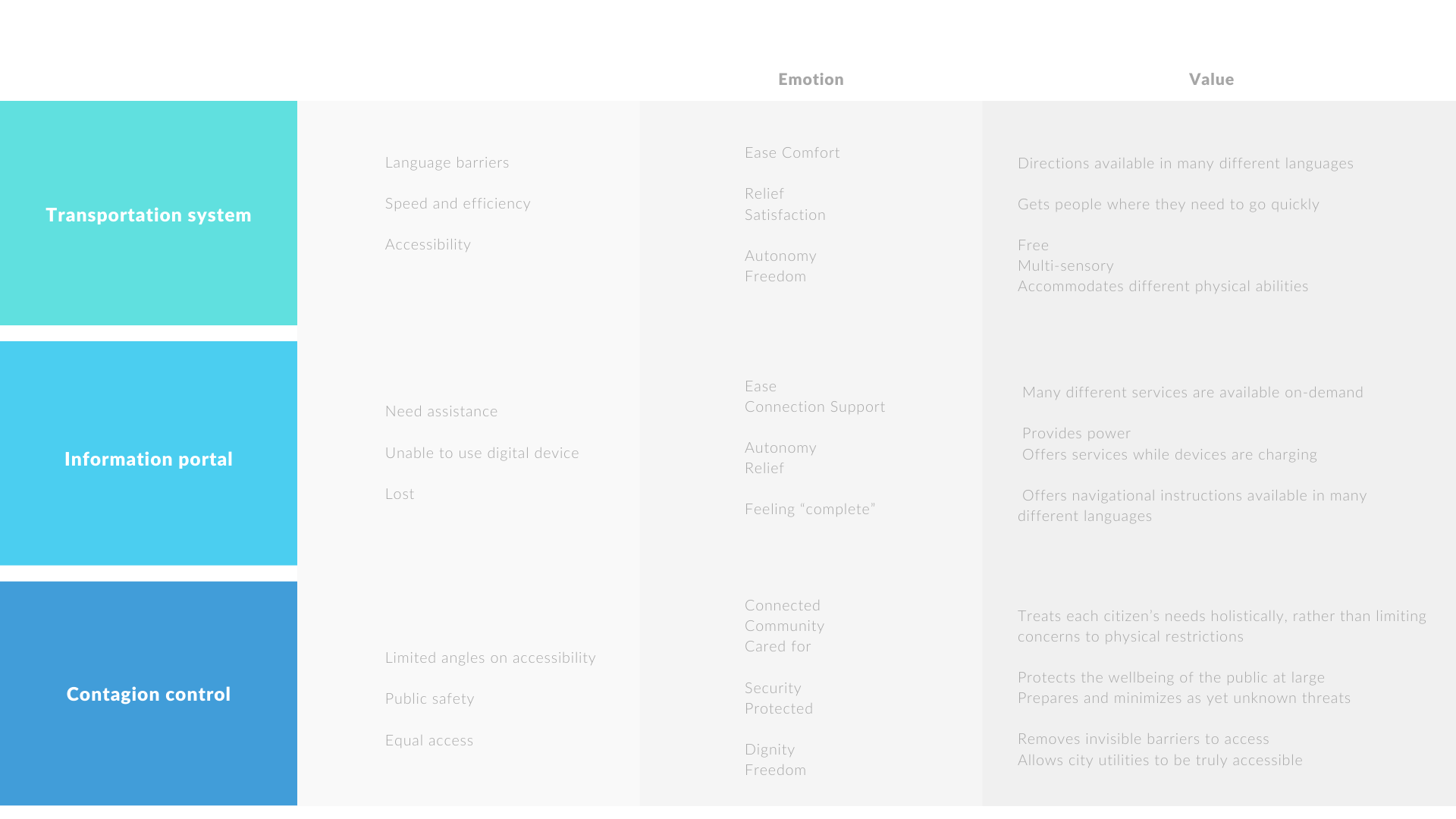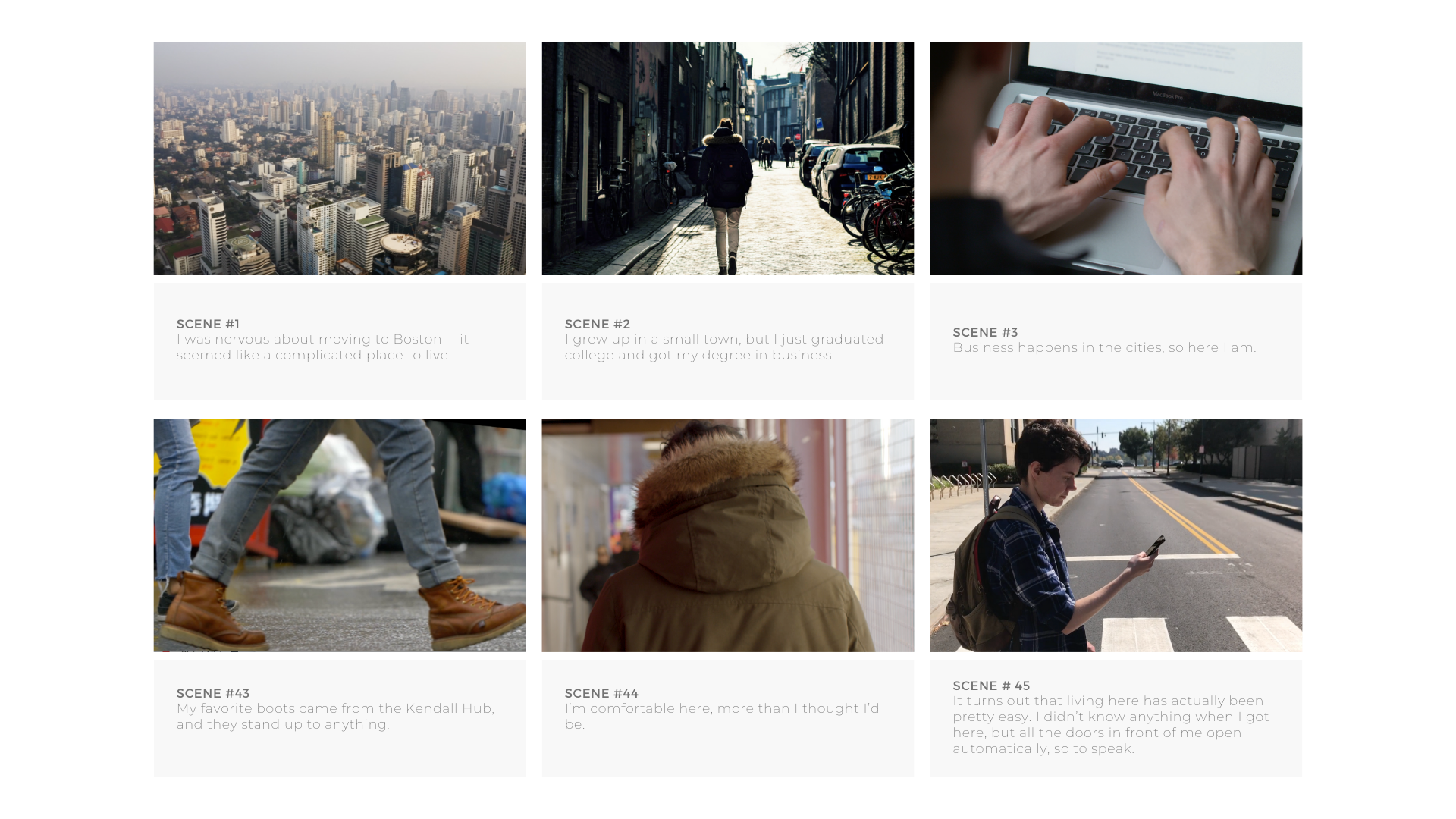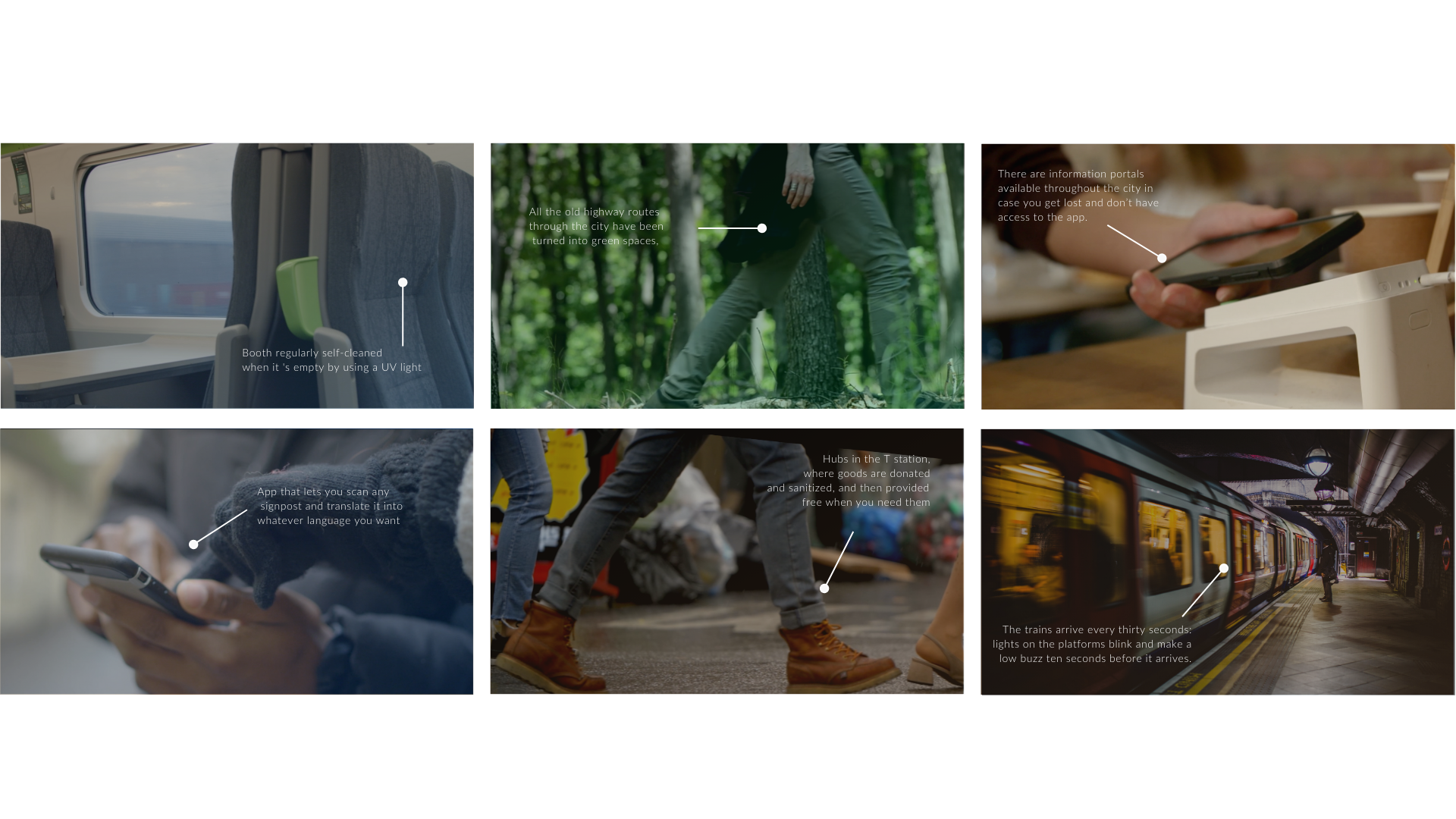GOAL? With a team of four students, we conceptualized different visions of urban spaces post-pandemic era.
ROLE Primary research (interview), secondary research (trends and emerging technology), insights, and opportunities (identify value experience), storyboard, video production.
CONCEPT During four weeks in the CMS950 design module, we imagined a city, by the year 2040, redesigned to promote the health and well-being of its inhabitants, an Assistive City that makes it easy to live well. Now how did we get here?
CHALLENGES Challenges: Bring together a diverse group of graduate students, who have not worked together, not even meet face to face, to work collaboratively through different platforms online on future-based scenarios, with a focus on solutions reimagining possible adaptations of emerging technologies trends.
Define and understand
Three questions popped out as a starting point: How has our behavior changed, how have we adapted, and what are we lacking and still yearning for during this time?
To design Assistive City, we first looked at how people are coping with the pandemic in public and private spaces. Each of us interviews a participant (7 interviews in total) in which we analyzed the emerging topics. One of the challenges in this stage was to conduct the interview online. My main interest was to create an environment where the participant felt in a safe space and open up. It turned out to be a very insightful interview.
The most relevant topics and takeaways in three hashtags: #EmotionalMaturity, #Vulnerable #Connected
My interviewer recently graduated from college. Therefore, most of our conversation revolved around topics such as transition, social life, and adulthood. (See figure 1). An uncovered emotion that I discovered throughout our meeting was how they are worried about getting sick because it could hinder and fall behind their graduate school. Being infected, in this case, has other consequences not associated with health concerns but to socio-economic and intellectual matters. Lastly, they mentioned that they were germophobic, which was interesting to me. It made me learn how other people are experiencing the pandemic and realized how it exacerbated some phobias.
Then, we transcribed all the answers and created an online mural in Miro (https://miro.com/app/board/o9J_kmFkg9o=/) where we gather and catalog all the answers in nine strategic areas: nostalgic, overwhelmed, enlightened, vulnerable, bored, oblivious, solidarity, responsible, connected.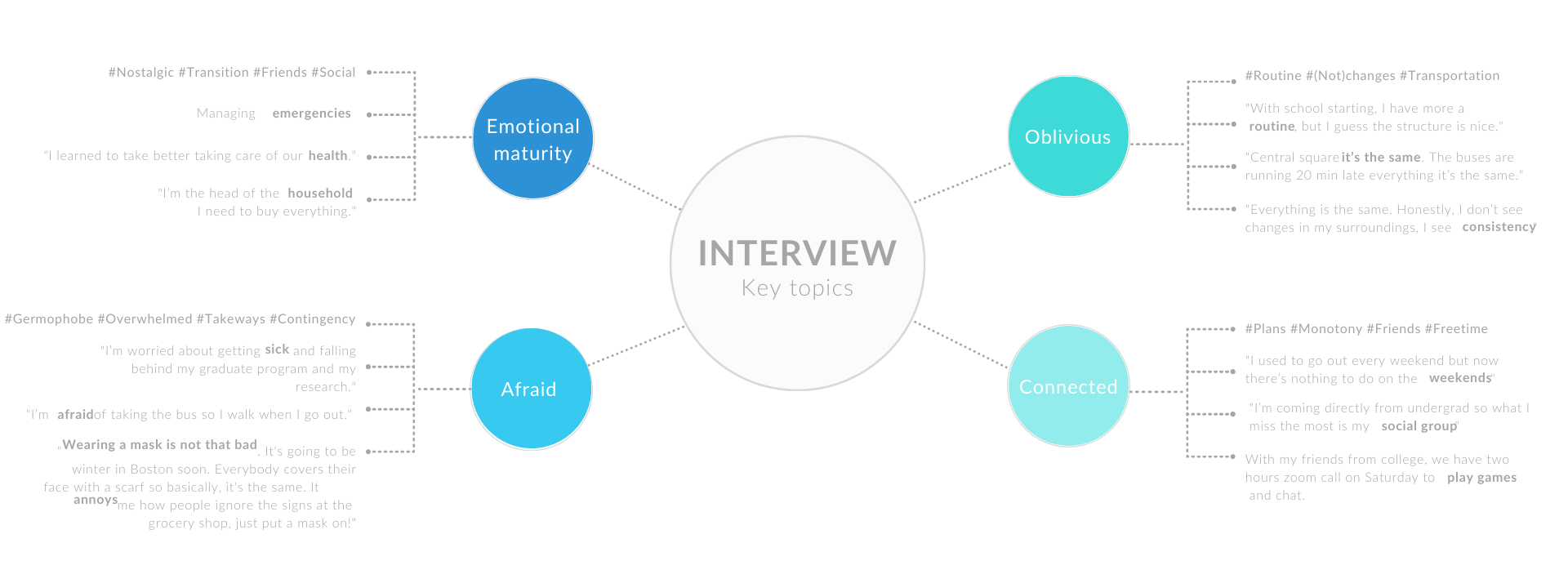
On the right path
The following step is backing our information with secondary sources. Here, we researched topics with a particular focus on providing a larger view and support to the answers from each of our interviewers. We decomposed our participant's feelings and values to determine which moment or experience was the most important or stimulating to keep us exploring.
First, I decided to look into the socio-economic trends related to my key topics: #Connected (How Instagram filters are a new way to interact in an online community), #EmotionalMaturity (How eating disorders have rocket during Covid-19), and #Vulnerable (How the pandemic killed the weekends).
Some of the results that I got from the secondary sources (see figure 2) were surprisingly opposite to the answers that I got from the interview. My interviewer lament that “there is nothing to do on the weekends.” However, in my secondary research, I found out that for some people feeling like every day is the same turned out to be positive. For instance, a man in his sixties mentioned that he has more time to spend with their grandkids, and young professionals living in NYC applaud that the can take longer lunches during the workweek, and someone else mentioned: “I don’t get the Sunday’s scares anymore.”
Second, for the technological trends, I decided to focus on #vulnerable since the participant showed a lot of concern about navigating the world during the pandemic. I encountered several initiatives that are adapting existing technologies to cope with it. For instance, a company is using Snapchat filters for safe social distancing, some restaurants are implementing QR Codes, and in India, to reduce elevator anxiety, a company has an innovative way to use it without touching the buttons. All these trends and technologies sum up in one big concept: #contactless.
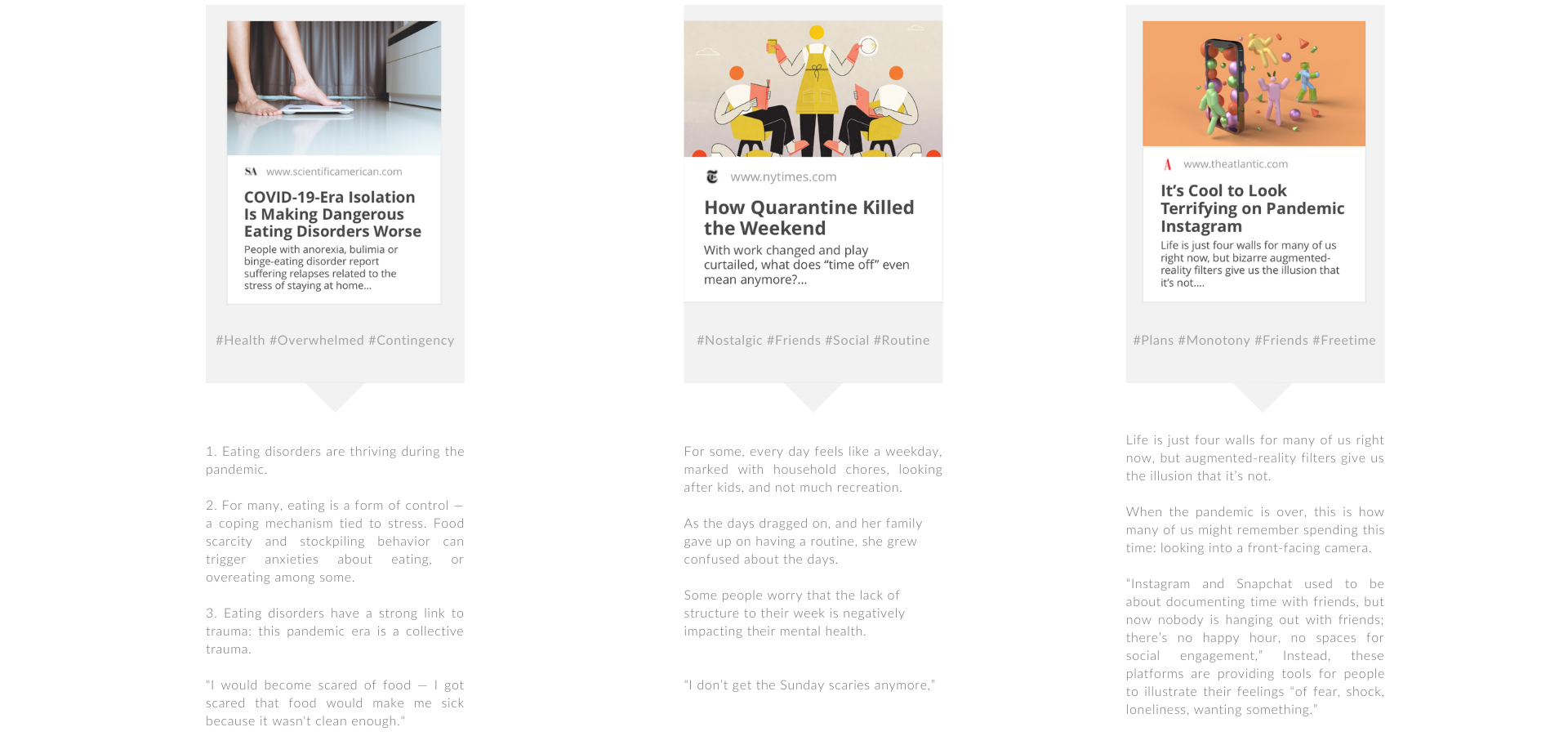
A bumpy ride
To arrange my ideas, I decided to map the most important concepts from both my primary source and secondary source and visually detect how these ideas could be interconnected. (See figure 3).
The rest of the team had other topics. Thus, a lot of ideas and trends came out after this session. Now, the big questions were: What do we do with all this information? How do we plan which trends to continue exploring? Which has the most potential? Why do we care about that specific trend? The following step was to for all members of the team to fast prototype and write down our ideas individually. After that, we would get back together and decide which ones to pursue. This part was especially challenging for me since I am not used to fasting prototype. Thus, I felt under a lot of pressure when we had to develop an idea in five minutes. However, it ended up to be a good glimpse into how to imagine and ideate fast. I started looking at how people interact at public spaces and transportation systems and see if we could detect a specific situation where we could help them feel less anxious or vulnerable since my interviewer brought it up during our conversation.
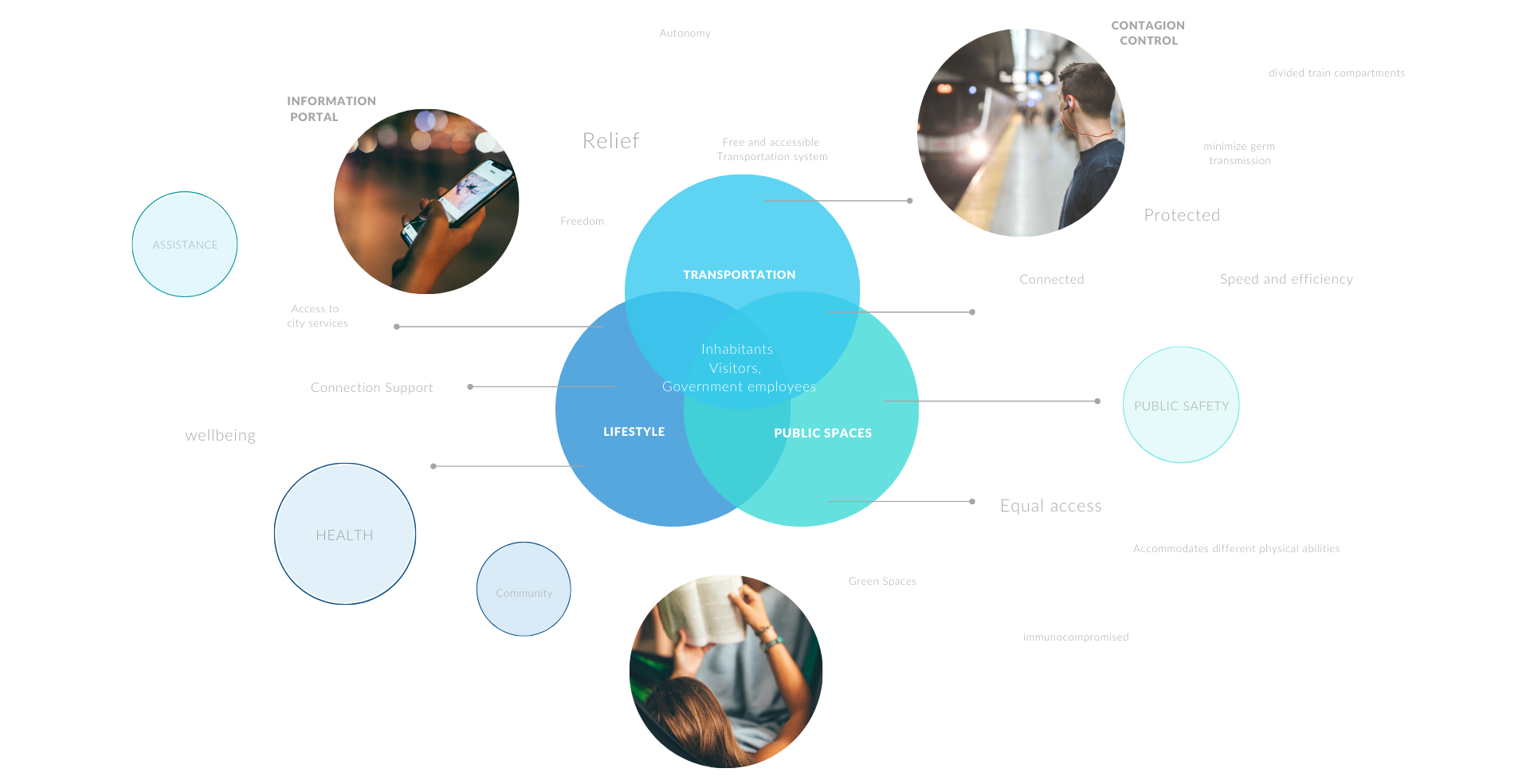
Our persona
For who are we designing? There are an infinite number of paths to follow and profiles we could think of, ranging from the less aware or afraid of the virus to the most paranoic, and these were our extremes. One thing that I learned throughout the process is that in order to create a solution for a problem, we must first understand: who is the user? And what is his problem? However, I also learned that designing personas can be quite challenging since their descriptions need to produce some insights and design solutions. Then, we tried to describe them as deeply and extensively as possible. (see figure 4) We gathered all our findings into personas and chose one for prototyping our idea. We define his demographics, values, emotions, and pain points. With all his characteristics, one colleague wrote Riley’s story. We then ideate how our notion of Assistive City would align with his needs.
